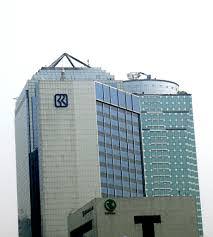Bank Rakyat Indonesia: Comprehensive Financial Analysis and Stock Outlook
Broker Name: UOB Kay Hian
Date: February 17, 2025
Introduction
Bank Rakyat Indonesia (BBRI), a state-owned financial institution and the largest micro-banking player in Indonesia, has been under scrutiny due to its moderate loan growth and elevated credit costs. In this detailed company update, UOB Kay Hian delves deep into BBRI’s financial performance, future projections, and the challenges it faces. Despite the hurdles, the recommendation to BUY is maintained, with a revised target price of Rp4,500, reflecting a 16.9% upside from its share price of Rp3,860.
2024 Financial Highlights and Challenges
BBRI’s fourth-quarter 2024 results revealed a decline in net profit by 1.8% quarter-on-quarter and 6.3% year-on-year, bringing the total net profit for 2024 to Rp60.2 trillion. This was in line with market expectations.
- Net Interest Margin (NIM): Declined by 55 basis points quarter-on-quarter, attributed to increased cost of funds and a drop in recovery income.
- Loan Growth: Loans grew moderately at 7%, with corporate loans seeing a 24% year-on-year increase and medium-segment loans rising by 21.6% year-on-year.
- Deposit Growth: Deposits remained flat, leading to a loan-to-deposit ratio (LDR) increase to 89% from 84% in 2023.
- Non-Performing Loans (NPL) Improvement: NPL ratio improved to 2.78% in 2024, down from 3.0% in 2023, supported by a massive write-off of Rp45.4 trillion.
- CASA Ratio: Current and Savings Account (CASA) rose by 5.1% year-on-year, improving the CASA ratio to 67% from 64% in 2023.
2025 Outlook: Moderation in Growth and Elevated Credit Costs
Loan Growth Projections
For 2025, BBRI is expected to achieve a moderate loan growth of 7-9%, driven primarily by the corporate, medium, and consumer segments. Micro-loan growth is projected at a modest 3%, supported by products like KUPEDES and Pegadaian. Management aims for micro loans to return to double-digit growth by 2026.
Credit Costs Remain a Concern
Credit costs are anticipated to stay elevated at over 3% in 2025 due to a high Loan-at-Risk (LaR) ratio of 10.7%, which increased significantly from 9.78% in 2019. Special Mention Loans (SML) doubled to Rp65 trillion in 2024 compared to Rp33.8 trillion in 2019. Additionally, Permodalan Nasional Madani (PNM), a subsidiary focused on ultra-micro financing, contributed to asset quality deterioration. Net NPL downgrades are expected to range between Rp3-5 trillion per month in 2025.
Net Interest Margin (NIM) Stability
Despite the challenges, BBRI’s NIM is projected to remain stable at 7.7% in 2025. This stability is attributed to higher yields in corporate loans and stable yields in micro loans driven by KUPEDES and Pegadaian.
Earnings Revision and Key Risks
Earnings Downgrade
UOB Kay Hian has revised its net profit estimates for 2025 and 2026 downward by 15% and 13%, respectively. The revisions are primarily due to:
- Lower loan growth expectations.
- Reduced NIM assumptions.
- Higher credit costs.
Despite the earnings cut, the bank expects strong recovery income exceeding Rp20 trillion in 2025, driven by significant write-offs.
Key Risks
The major risks identified include:
- Adverse macroeconomic developments.
- Rupiah instability and geopolitical uncertainties.
- Worsening asset quality and lower-than-expected loan growth.
- Changes in management and lower-than-expected NIM.
Valuation and Recommendation
BBRI’s target price has been revised to Rp4,500 from Rp5,600, reflecting the significant earnings cut. The revised target price is based on a fair P/B ratio of 2.05x, derived using the Gordon Growth Model with the following assumptions:
- ROE: 19%
- Growth: 5%
- Cost of Equity: 11.8%
The bank’s current valuation of 1.7x forward P/B is considered undemanding, as it is -1.6 standard deviations below its five-year historical forward P/B mean. Additionally, management has guided a potential dividend payout ratio exceeding 85%, offering an attractive dividend yield of 7.9% in 2025, rising to 9.9% by 2027.
Loan Segmentation and Subsidiary Performance
Loan Breakdown
BBRI’s loan portfolio is segmented as follows:
- Micro Loans: Represent 46.3% of total loans, with a growth of 2.7% year-on-year in 2024.
- Corporate Loans: Account for 18% of total loans, with a robust growth of 23.6% year-on-year in 2024.
- Consumer Loans: Make up 15.4% of total loans, growing by 10.1% year-on-year in 2024.
- Medium-Segment Loans: Represent 3.3% of total loans, growing by 21.5% year-on-year in 2024.
Subsidiary Performance
Performance of key subsidiaries, Pegadaian and PNM, has been mixed. Pegadaian reported a 26.3% year-on-year growth, while PNM’s loan growth stood at 6.2% year-on-year. However, PNM’s focus on ultra-micro loans has contributed to a deterioration in asset quality.
Conclusion
Despite the challenges of elevated credit costs and moderate loan growth, Bank Rakyat Indonesia remains a strong player in Indonesia’s banking sector. With a strategic focus on asset quality improvement and a path to recovery in micro-loan growth by 2026, the bank offers a promising long-term outlook. Investors are advised to maintain a BUY position, leveraging the undemanding valuation and attractive dividend yields.




